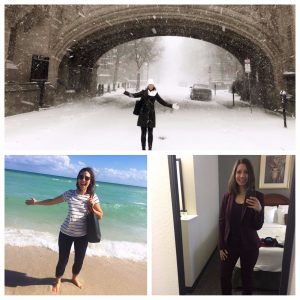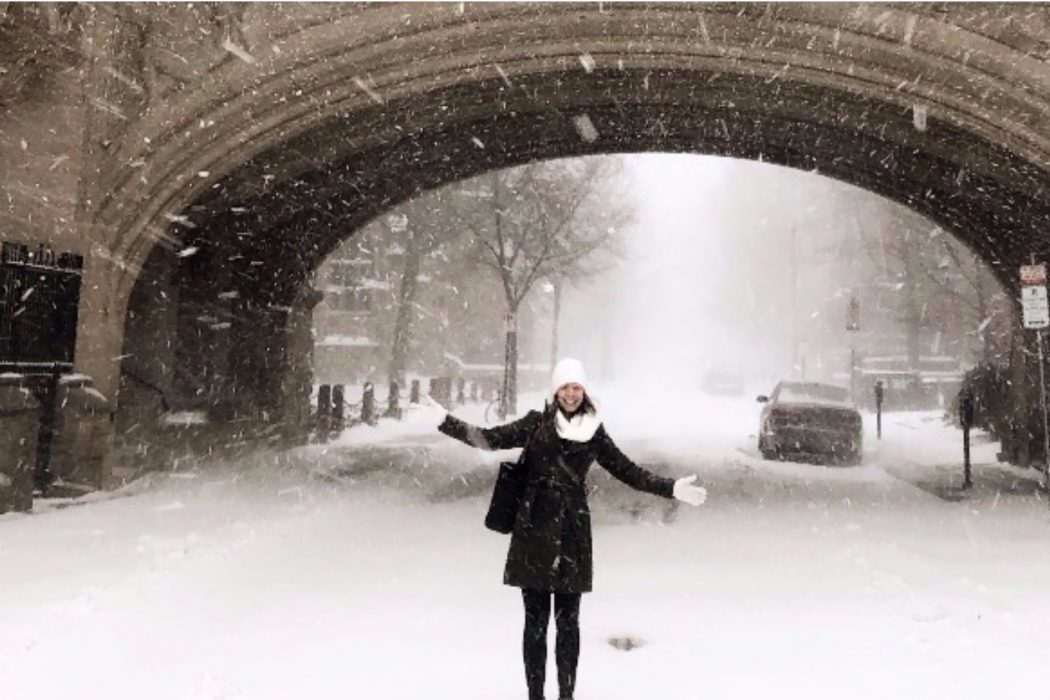I heaved my carry-on into the 5th overhead compartment of the week and squeezed past a catatonic passenger to take up residence in my usual middle seat. I raked my fingers through the chasm of my purse in attempts to locate my iPhone with hopes of confirming the correct time zone, as time had become amorphous somewhere over the last two states I’d visited. My search-and-rescue attempt was interrupted by a briney smell wafting from my neighboring passenger. She was unwrapping a deli pickle (not a slice—the whole pickle) from a rumpled napkin and enjoying what she seemed to believe was an appropriate travel snack. I quickly located my phone, shoved earbuds in place and closed my eyes, hoping to reopen them only after I’d arrived at my next destination. Residency interview season was underway.
Job searches commonly involve applications and a few interviews, resulting in one or several offers and subsequent negotiations. At least this is what I had experienced in my previous life in documentary filmmaking, before I had experienced a change of heart and ultimately changed careers. The residency application process, however, begins with a single application and follows with many interviews (upwards of 20 for some applicants who are couples matching) and concludes with a single, binding offer determined by a Nobel Prize-winning algorithm. I try not to lose sleep over the thought that the next 4 years of my life could be determined by math.

Despite an often paralytic fear of flying, I’d begun to fall into a travel routine. Iron suit, gently fold into suitcase. Use ride-sharing app to reach airport. Charge phone at random outlet next to a trash bin while waiting to board. Curse self for yet again not purchasing priority boarding. I’ve become exceptionally skilled at changing out of my suit in an airport bathroom. Overall, I have taken 29 flights over the past 3 months and through this high volume of travel, I’ve learned which hotels are most comfortable (Sheraton) or offer free warm cookies (Doubletree), which airplanes seats have an electrical outlet (usually rows 9-14 on American Airlines), and where to find the most delicious ice cream during short visits (Jeni’s in Columbus, OH). I devoted some of my limited carry-on space for running shoes and workout clothes and went running in most places I visited, until temperatures dipped below 20 degrees in the last weeks of December, or when I was met by a “bomb cyclone” last week. I met applicants from around the country and saw the same friendly faces at multiple interviews, exchanging numbers and sharing meals at airports.
How do you decide where to spend 80 hours a week for the next four years, based on a 24- to 48-hour visit? My predilection for organization and planning has flourished in the wake of a challenging decision, and I’ve stoked my compulsions with complicated Excel spreadsheets, numerous lists, and endless late-night conversations with my fiancé (with whom I am couples matching). Medical school teaches us to think critically, to create broad lists of differential diagnoses, and to consider the social, financial, and pathophysiological components of patient care. It is with similar comprehensive consideration that I have approached the creation of my rank list. Where will I receive the best surgical training, experience a wide breadth of pathology, work an appropriate amount of duty-hours, and enjoy the location of the program?
While data points may help me focus my thoughts on where I would find a good fit, I’ve actually found myself thinking more about gut reaction. Did I leave an interview day feeling excited about my future career, and did I revisit thought-provoking conversations I had with faculty and residents? Or did I come away with a nagging feeling that the program’s philosophy was dissonant from my own personal values and outlook? Ultimately, it is that indefinable feeling that is likely to drive my decision-making process over the next month as I finalize my rank list. Then again, I suppose it could all come down to math.
Michelle Blumenschine is a medical student in the Class of 2018. She holds degrees in film & TV production and journalism & mass communication from New York University and completed her pre-med post-bac certificate at Columbia University. Before moving to Phoenix from New York City, Michelle worked as a documentary film producer. She enjoys making to-do lists, drinking craft beer, and collecting National Geographic magazines. She is pursuing a career in obstetrics and gynecology.

